- August 21, 2023
The Ultimate Guide to Dog Enrichment: Keeping Your Canine Companion Happy and Stimulated
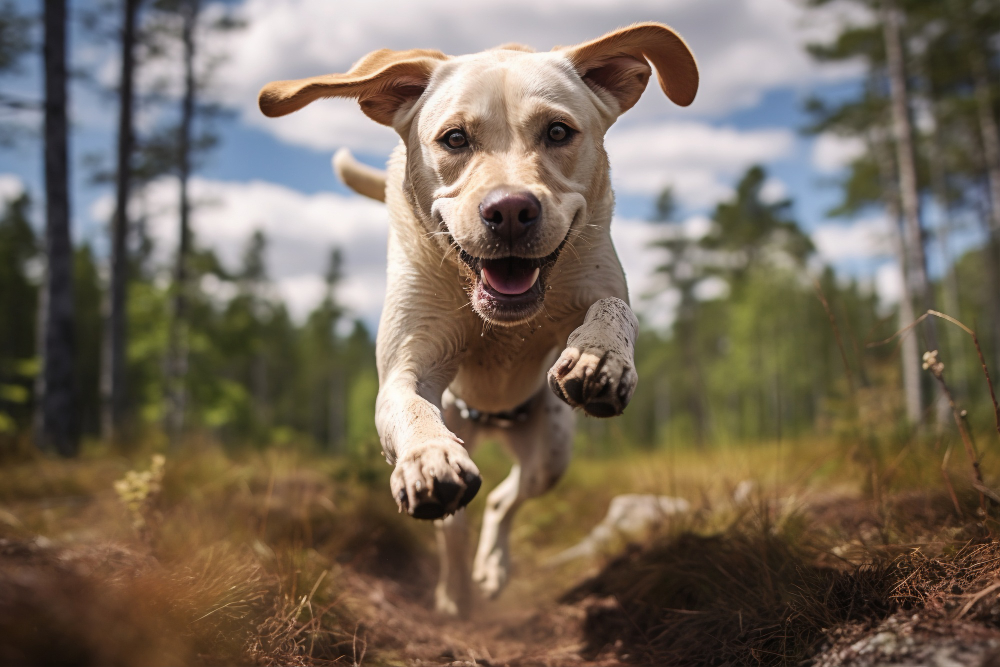
Introduction
As responsible pet owners, it is our duty to ensure the well-being and happiness of our furry friends. While physical exercise is important for dogs, mental stimulation through enrichment activities is equally crucial. Just like humans, dogs can get bored, frustrated, anxious, and even depressed when they lack mental stimulation. Engaging their minds not only prevents behavior issues but also enhances their cognitive function and overall mental health.
In this comprehensive guide, we will explore various strategies and activities to provide mental enrichment for your dog. From adding variety to your walks to introducing interactive toys and puzzles, we will cover all aspects of dog enrichment. So, let’s dive in and discover how you can keep your canine companion entertained, engaged, and fulfilled!
Section 1: The Importance of Dog Enrichment
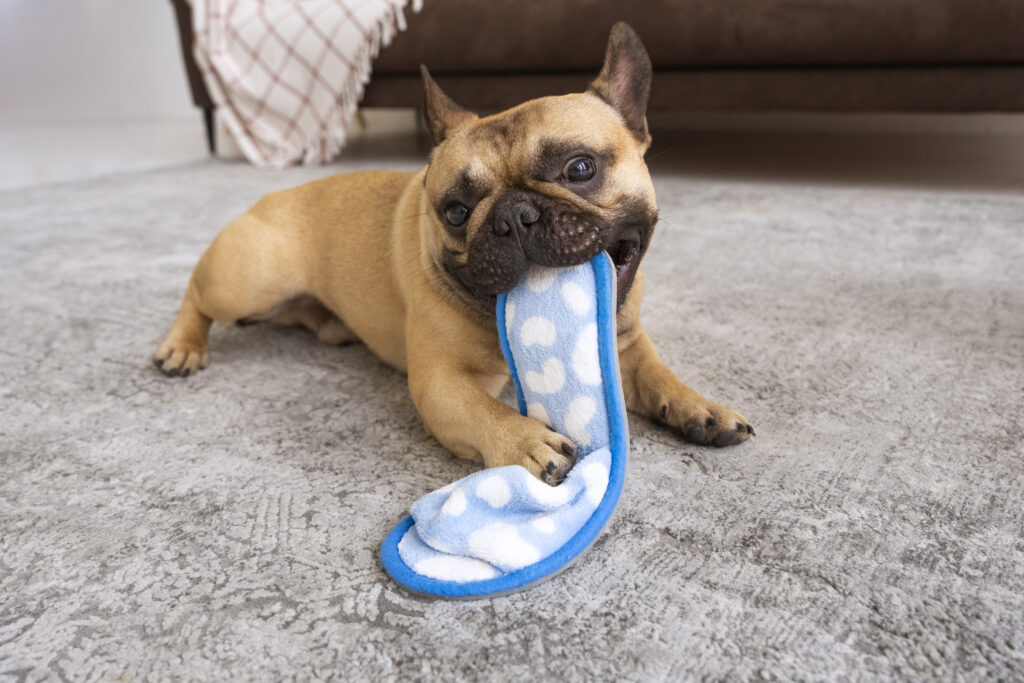
Why Mental Enrichment is Essential for Dogs
Dogs are naturally curious and intelligent creatures. They have a need for mental stimulation to keep their minds sharp and engaged. Without adequate mental enrichment, dogs may exhibit undesirable behaviors like excessive barking, chewing, digging, or even aggression. Mental enrichment provides the following benefits for your furry friend:
- Preventing Boredom and Behavioral Issues: Dogs that lack mental stimulation often resort to destructive behaviors out of sheer boredom. By providing enrichment activities, you can keep your dog engaged and prevent the development of destructive habits.
- Improving Cognitive Function: Mental enrichment exercises challenge your dog’s brain, improving their problem-solving skills and overall cognitive function. This can lead to a smarter and more trainable dog.
- Building Confidence and Reducing Anxiety: Engaging in mentally stimulating activities can boost your dog’s confidence and provide an outlet for their energy. This can help reduce anxiety and promote a calmer demeanor.
- Encouraging Natural Behaviors: Dogs have innate instincts and behaviors that need to be fulfilled. Mental enrichment allows them to engage in activities like sniffing, hunting, and problem-solving, which are essential for their overall well-being.
Consequences of Neglecting Mental Enrichment
Failing to provide mental stimulation for your dog can have negative consequences on their overall health and behavior. Some of the consequences of neglecting mental enrichment include:
- Boredom and Frustration: Dogs that are not mentally stimulated may become bored and frustrated, leading to destructive behaviors and excessive energy.
- Anxiety and Stress: Without proper mental stimulation, dogs may become anxious and stressed, leading to behavioral issues and a decrease in overall well-being.
- Lack of Focus and Training Difficulties: Dogs that lack mental stimulation may struggle to focus and have difficulty learning and following commands.
- Depression and Behavioral Problems: Dogs that do not receive adequate mental enrichment may become depressed and exhibit problematic behaviors such as aggression, separation anxiety, or excessive barking.
Now that we understand the importance of mental enrichment for dogs, let’s explore different ways to provide mental stimulation and fulfill their innate needs.
Section 2: Adding Variety to Your Dog’s Walks
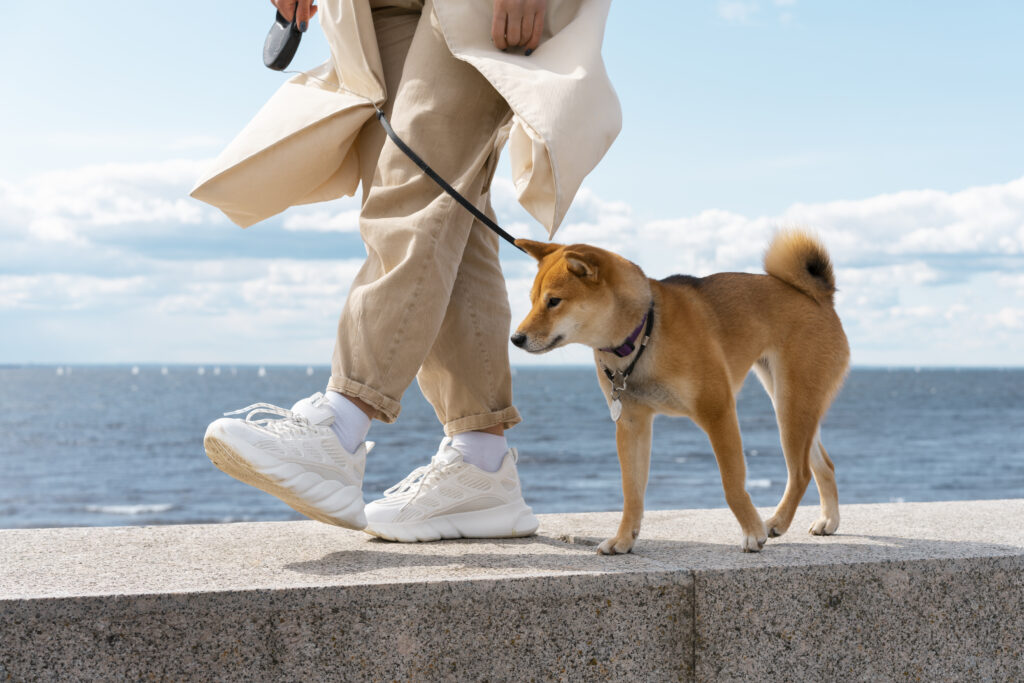
Walking is not only a form of physical exercise but also an opportunity for mental enrichment. Dogs rely heavily on their sense of smell to explore the world around them. By adding variety to your walks, you can expose your dog to new sights, sounds, and scents, providing them with mental stimulation. Here are some ideas to make your walks more interesting:
Exploring New Routes
Instead of walking the same route every day, try exploring new paths and neighborhoods. Take your dog to different parks, nature trails, or even urban areas where they can encounter new smells and sights. This will keep their senses engaged and provide mental stimulation.
Allowing Time for Sniffing and Investigating
While physical exercise is important during walks, it’s equally crucial to allow your dog plenty of time to sniff and investigate their surroundings. Dogs gather information through their sense of smell, so let them explore interesting scents and follow their instincts. This not only provides mental stimulation but also allows your dog to engage in natural behaviors.
Incorporating Training into Walks
Walking can also be an opportunity to engage your dog’s mind through training exercises. Teach your dog new commands or practice obedience training during your walks. This challenges their brain and helps to maintain focus and mental engagement.
Section 3: Social Enrichment for Your Dog

Dogs are social animals and thrive on social interactions with other dogs and humans. Providing opportunities for social enrichment can greatly benefit their mental well-being. Here are some ways to incorporate social enrichment into your dog’s life:
Playdates with Other Dogs
Arrange playdates with other friendly and well-behaved dogs. This allows your dog to engage in social play and interaction, which is essential for their social development. Make sure to choose playmates that match your dog’s energy level and temperament.
Dog-Friendly Outings
Take your dog to dog-friendly places such as pet stores, outdoor cafes, or dog parks. These outings expose them to new environments, smells, and interactions with other dogs and people. It’s important to ensure that your dog is comfortable and well-behaved in these settings to prevent any negative experiences.
Training Classes and Workshops
Enroll your dog in training classes or workshops where they can interact with other dogs and learn new skills. These structured environments provide mental stimulation and help improve their socialization and obedience.
Section 4: Interactive Toys and Puzzle Games

Interactive toys and puzzle games are excellent tools for mental enrichment. They challenge your dog’s problem-solving skills and keep them engaged for extended periods. Here are some interactive toy and puzzle game ideas:
Treat-Dispensing Toys
Treat-dispensing toys, such as Kong toys or puzzle balls, require your dog to work for their food. These toys can be filled with treats or kibble, and your dog has to figure out how to extract the food. This not only provides mental stimulation but also slows down their eating, promoting healthy digestion.
Hide-and-Seek Games
Hide treats or toys around the house or in the yard and encourage your dog to find them. Start with easy hiding spots and gradually increase the difficulty. This game engages their sense of smell and enhances their problem-solving skills.
Interactive Puzzle Games
There are various interactive puzzle games available in the market that require your dog to solve puzzles to access treats or toys. These games come in different levels of difficulty, making them suitable for dogs of all ages and skill levels.
Section 5: Engaging Your Dog’s Senses
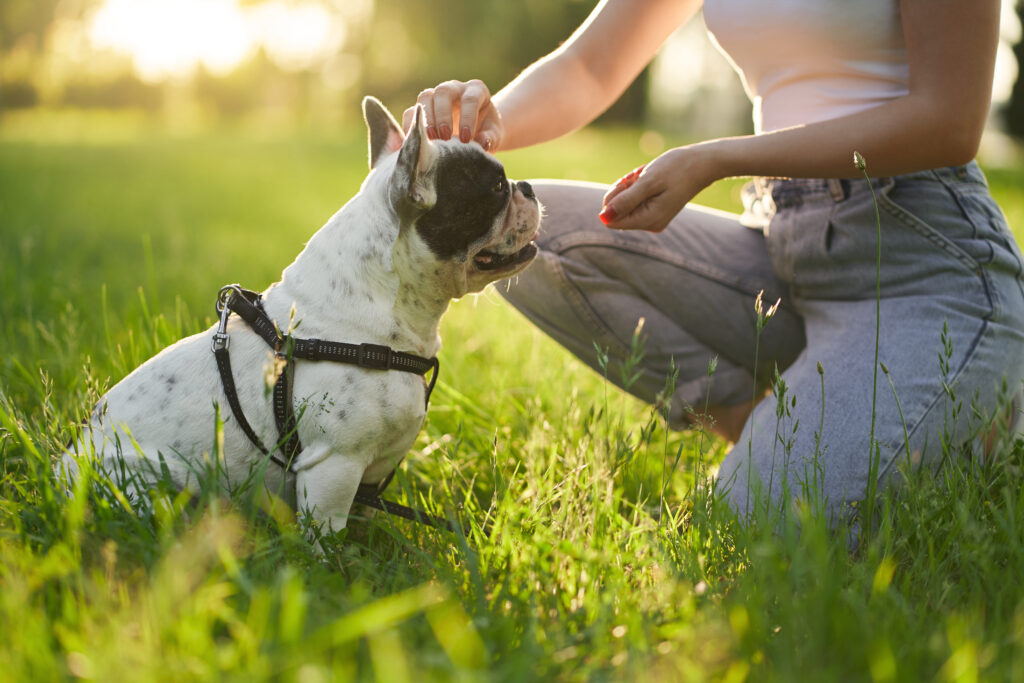
Engaging your dog’s senses is a great way to provide mental enrichment. Dogs rely on their senses of smell, sight, hearing, taste, and touch to understand the world around them. Here are some sensory enrichment ideas:
Scent Games
Scent games involve hiding treats or toys and encouraging your dog to find them using their sense of smell. You can start with simple hiding spots and gradually increase the difficulty. This engages their sense of smell and taps into their natural hunting instincts.
Sensory Walks
Take your dog on sensory walks where they can experience different textures, sounds, and smells. Let them explore different surfaces like grass, sand, or gravel. This provides mental stimulation and enriches their sensory experience.
Sound and Sight Stimulation
Expose your dog to different sounds and sights to keep their senses engaged. Play calming music or nature sounds in the background, or introduce them to gentle sounds like wind chimes. You can also provide visual stimulation by showing them videos of nature or animals.
Section 6: DIY Enrichment Activities

Engaging in do-it-yourself (DIY) enrichment activities is not only cost-effective but also allows you to customize the activities to suit your dog’s preferences. Here are some simple DIY enrichment ideas:
Snuffle Mat
Create a snuffle mat by tying strips of fleece or fabric to a rubber mat. Hide treats or kibble within the mat, and let your dog use their nose to find the hidden treasures. This activity engages their sense of smell and provides mental stimulation.
Muffin Tin Puzzle
Place treats or kibble in a muffin tin and cover each compartment with tennis balls or toys. Your dog has to figure out how to remove the balls and access the treats. This puzzle game challenges their problem-solving skills.
Box Puzzle
Use nesting boxes and hide high-value treats in the smallest box. Fold the box and let your dog figure out how to open each box to reach the hidden treats. This activity stimulates their problem-solving abilities.
Section 7: Environmental Enrichment
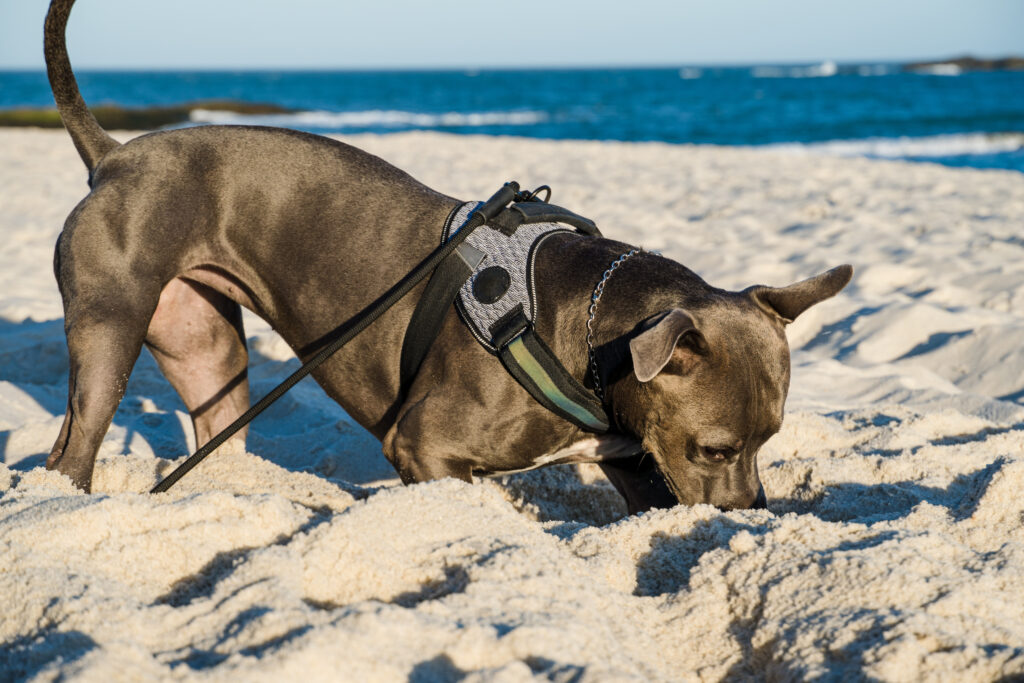
Creating an enriching environment for your dog is essential for their mental well-being. By adding complexity and variety to their living space, you can keep their minds engaged and prevent boredom. Here are some environmental enrichment ideas:
Digging Pit
Create a designated digging area in your backyard by filling a toddler paddling pool with sand. Bury toys or treats for your dog to discover while satisfying their natural digging instincts.
Indoor Agility Course
Set up an indoor agility course using household items like chairs, tunnels, and blankets. This provides mental and physical stimulation, challenging your dog’s problem-solving skills and coordination.
Novel Objects and Textures
Introduce new objects and textures to your dog’s environment to keep them mentally engaged. For example, provide them with different types of toys, surfaces to explore, or even a mirror for them to interact with.
Section 8: Feeding Enrichment
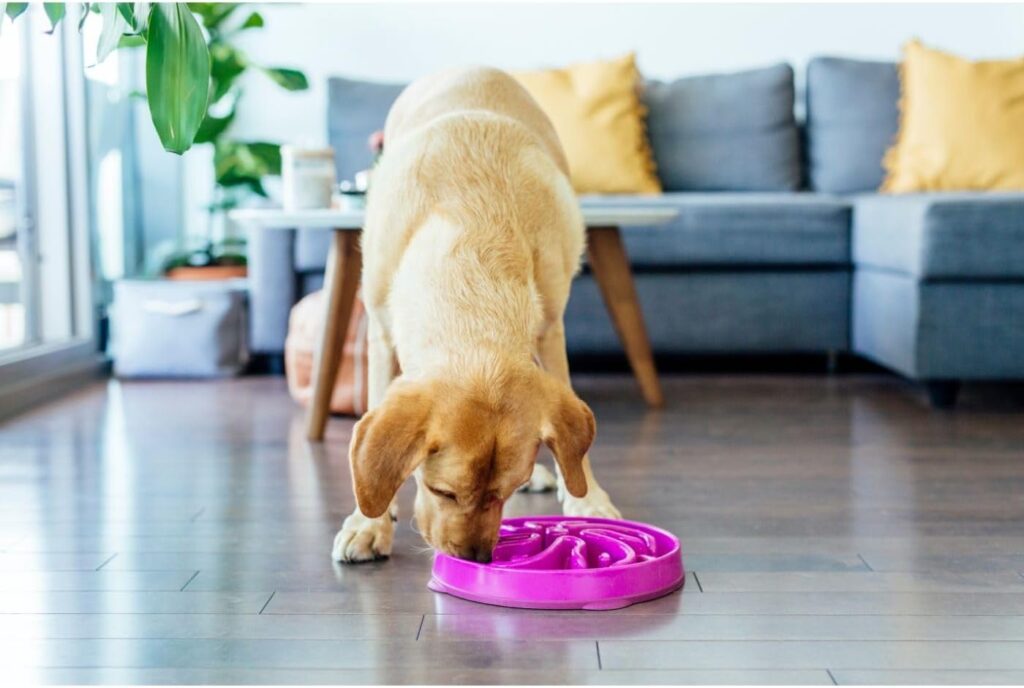
Mealtime is an excellent opportunity for mental enrichment. By making mealtime more challenging and interactive, you can provide mental stimulation for your dog. Here are some feeding enrichment ideas:
Food Puzzle Toys
Use food puzzle toys that require your dog to solve puzzles or manipulate the toy to access their food. These toys slow down their eating and engage their problem-solving skills.
Treat-Dispensing Toys
Similar to interactive toys, treat-dispensing toys make your dog work for their food. Fill the toy with treats or kibble, and your dog has to figure out how to extract the food, keeping them mentally engaged during mealtime.
Scavenger Hunt
Hide small portions of your dog’s meal around the house or in the yard, and let them use their nose to find the hidden food. This taps into their natural scavenging instincts and provides mental stimulation.
Section 9: Toy Enrichment
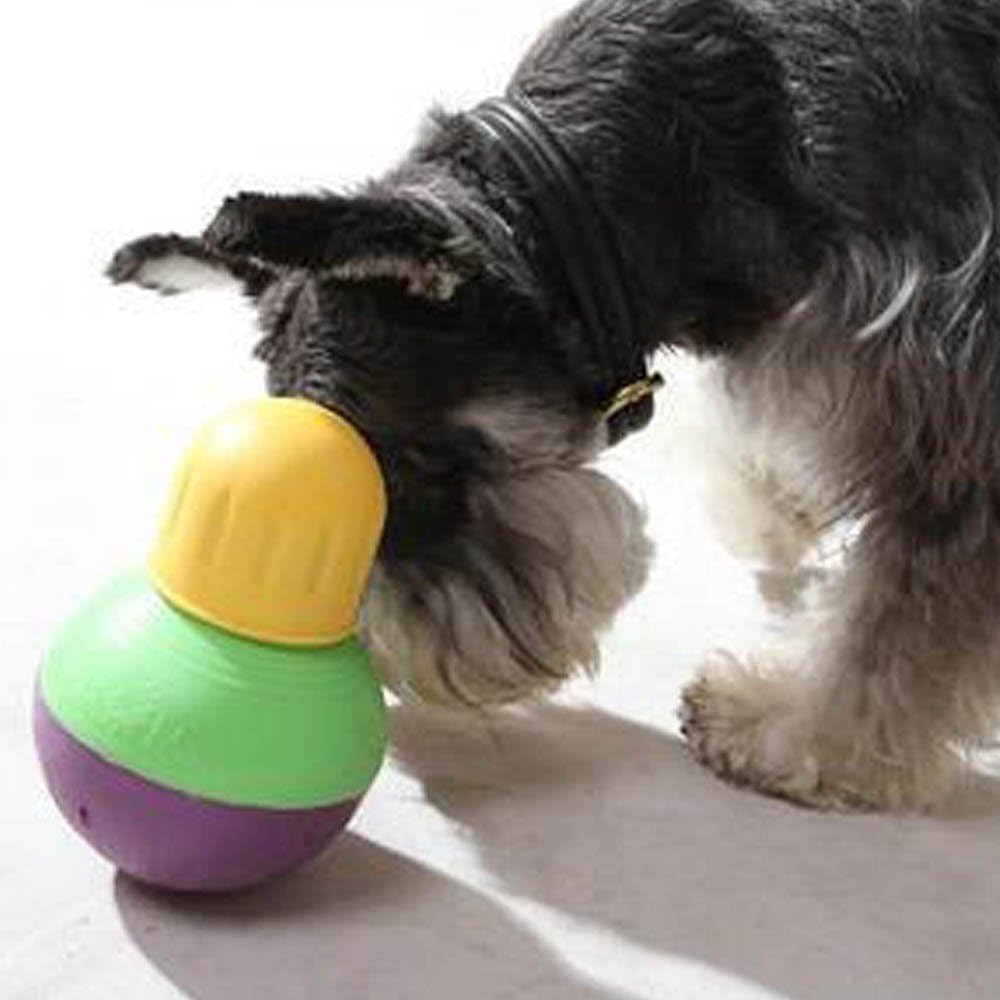
Toys play an important role in mental enrichment for dogs. They provide entertainment, engagement, and stimulation. Here are some toy enrichment ideas:
Interactive Chew Toys
Choose chew toys that are designed to keep your dog mentally engaged. Some chew toys have hidden compartments for treats or can be stuffed with food, providing a challenge for your dog to access the rewards.
Interactive Plush Toys
Interactive plush toys often have hidden squeakers or crinkle sounds, captivating your dog’s attention and stimulating their play instincts. These toys provide mental and sensory enrichment.
Puzzle Toys
There are various puzzle toys available in the market that require your dog to solve puzzles or manipulate objects to access treats or toys. These toys challenge their problem-solving skills and keep them mentally engaged.
Section 10: Incorporating Enrichment into Daily Life

Providing mental enrichment for your dog should be an integral part of their daily routine. Here are some tips on incorporating enrichment into their daily life:
Schedule Enrichment Activities
Set aside dedicated time each day for mental enrichment activities. This can be in the form of puzzle games, training sessions, or interactive toy play. Consistency is key to keeping your dog mentally stimulated.
Rotate Toys and Activities
To prevent boredom, regularly rotate your dog’s toys and activities. Introduce new toys or puzzles and retire old ones for a while. This keeps their environment fresh and exciting, preventing them from losing interest.
Incorporate Enrichment into Training
Integrate mental enrichment activities into your dog’s training sessions. For example, use treat-dispensing toys as rewards during obedience training or incorporate puzzle games into agility training. This helps keep their mind engaged and enhances their learning capabilities.
Conclusion
Mental enrichment is an essential aspect of ensuring the overall well-being and happiness of your dog. By providing varied and stimulating activities, you can engage your dog’s mind, prevent behavior issues, and promote a healthy and fulfilling life. From adding variety to their walks to incorporating interactive toys and puzzles, there are numerous ways to provide mental stimulation for your furry friend. Remember to tailor the enrichment activities to suit your dog’s preferences and abilities, and always prioritize their safety and enjoyment. So, start incorporating mental enrichment into your dog’s daily routine and watch them thrive both mentally and physically!
Additional Information:
- Recommended interactive toys: Kong Classic, Nina Ottosson Dog Brick, Outward Hound Hide-A-Squirrel Plush Toy
- Toy suggestions for chewers: Elk Antler Dog Chews, Benebone Wishbone, Kong Extreme, Jolly Ball Chew Toys
- Puzzle toy recommendations: Trixie Pet Products Flip Board, Outward Hound Dog Smart Puzzle Toy, Starmark Bob-A-Lot Interactive Pet Toy
Tags
What do you think?
Related Articles

New Puppy Checklist: Gear You’ll Need for Your New Dog
Getting a new puppy is really exciting, but before you welcome them home, it’s important to prepare your space for them. Since puppies need a
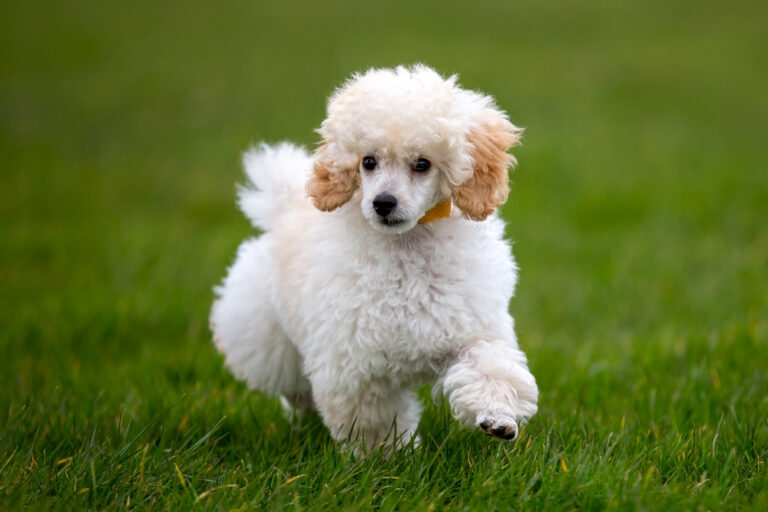
How Big Do Mini Poodles Get? Vet Reviewed Average Weight & Growth Chart – Dogster
The information is current and up-to-date in accordance with the latest veterinarian research. Learn more » When you buy a Miniature Poodle, you might not

Can Police Dogs Smell Nicotine? Vet Verified Facts & Info – Dogster
The information is current and up-to-date in accordance with the latest veterinarian research. Learn more » While cigarette sales have been declining steadily for decades,
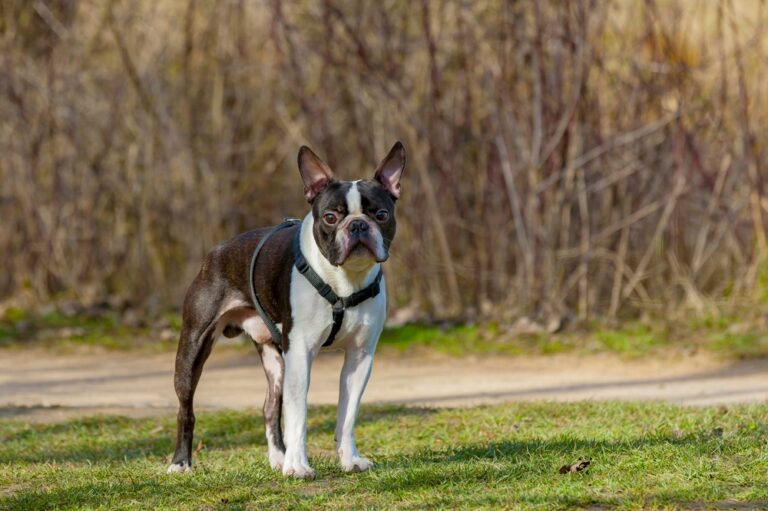
How Old Is 5 in Dog Years? Vet-Approved Guide to Each Size of Dog – Dogster
The information is current and up-to-date in accordance with the latest veterinarian research. Learn more » A common method for calculating a dog’s age is

